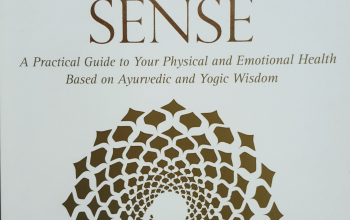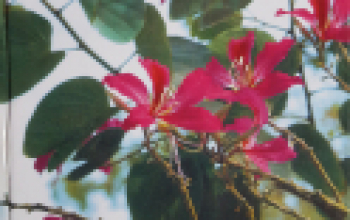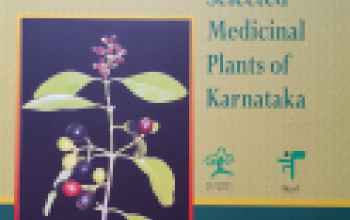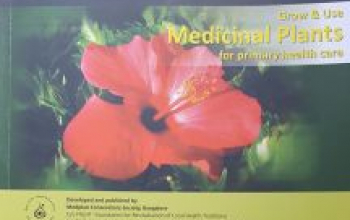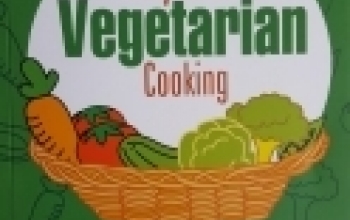This is a practical guide to individual’s physical and emotional health based on Ayurvedic and Yogic wisdom. It is a simple, step-by-step handbook on how to take better care of our health.
Written in a simple language, deeply researched and distilled from the author’s own lived experiences, “The Wellness Sense” puts our health and happiness in our own hands. It combines the yogic view of food as satvic, rajacic and tamasic with the Ayurvedic perspective and further relates it to the modern view of foods as acidic and alkaline. It also discusses the Ayurvedic prakriti (vata, pitta and kapha) in the context of yogic priority (satvic, rajacic and tamasic) in a truly cohesive way.
As a patient of asthma, the author was allergic to pollen. Whenever the season changed he fell sick. Every year, at the dawn of spring, his asthma would get worse and he would start gobbling up cough syrups and cold and flu tablets. Then, he had to increase the dosage of his inhalers and lose most of his appetite. His body needed rest but time was the constraint. In his company, his teams and clients needed him every day, in different time zones and the immense stress at work left him gasping for breath. Exercising at the gym, playing badminton, eating organic food and taking supplements only helped a little.
A few years later, the author renounced the material world and went to the Himalayas to begin his life as a monk. He stayed in the woods and caves for nearly 13 months. While he was there, he did not even suffered from common cold or any other ailment. Surviving on one frugal meal a day, when he emerged from his hut many months later after intense meditation, he felt fitter and stronger than ever before.
He figured that it’s never too late to take control of one’s well-being and no matter what is one’s genetic disposition, one can attain near-perfect health. He reflected on his perfect health in the Himalayas and figured that there were many factors contributing to his well-being there. He realised that living in harmony with nature and adopting some of the yogic principles were the primary reasons why he did not fell sick.
What had worked for him was leading a simple life in the most natural way. He was in constant touch with Mother Nature and her incredible healing powers brought about profound changes in his body and mind. Keeping in view the fact that most of the people can not afford to leave the town even for a day, he has written this book to guide them. Because, remarkable fact about Ayurveda and Yoga is that it is not necessary for an individual to live in the woods in the Himalayas to be in touch with nature. A person just needs the willingness to understand health in its entirety and the discipline to take control of his/ her physical and emotional well-being.
In Ayurveda, as in yoga and tantra, the health of an individual is not just state of his physical body but aggregate of the body, senses, mind and soul. His immune system is directly impacted by his state of mind. The more positive and happy he is, the stronger his immunity. More often than not, an unhealthy mental state is the cause of illness - particularly with adults. To remain disease-free, it is important to have a healthy mind and a healthy body, they complement each other.
The modern system of medicine is mostly symptom-driven. If a person is suffering from headache, it directs him to take a painkiller. But, Ayurveda does not believe in treating symptoms. It advocates understanding the patient and treating the cause of the symptom. In other words, it understands that one man’s medicine could be another man’s poison.
The author explains as follows: Just focussing on your physical health by way of better diet and exercise is only a fraction of the solution. The important part is taking care of your mental and emotional health. How you respond to what life throws at you affects your health in the most significant manner. You cannot choose your parents, your children, your country of birth and so forth. You cannot change your boss, your spouse, your children. The economy, the country and the state of society is largely beyond your control. You may have a few practical choices in these. You can, however, choose how you feel about those elements of your life and how you respond to them. The way you look at anything and the manner in which you accept or react are the two most important factors that determine your overall well-being. If you can either change your perspective or your response towards what you find disturbing, ninety percent of the job is done. The remaining ten per cent is simply about body fitness. Yogic wisdom helps you gain mental equilibrium and Ayurveda, physical well-being.
In the last chapter, the author gives the golden principle to stay in the finest of our physical, mental and emotional health. He states that at the root of most ailments, diseases and disorder is clutter. Clutter could exist in an individual’s physical, mental or emotional world. Clutter in any one world is a strong indication that it also exists in the other two worlds.
Most of us carry a clutter of thoughts - often painful thoughts - of the past. We walk around in a mess of negative emotions, carrying a bag of unfulfilled desires. These thoughts and emotions continue to pile up, until one day we break down. This point of breakdown starts to manifest in the form of ailments in our three bodies - physical, mental and emotional. How do we clean the clutter in the physical world? We organise the necessary stuff and discard the useless. This leads to the golden principle: simplify your life. This is truly the yogic sense, the wellness sense, the author concludes.
He states that the easiest way to start simplifying your life is to de-clutter it. Start by cleaning up your physical world. The more you simplify your outer world, the greater the simplicity in the inner world. Use mindfulness and meditation as your tools (as described in the book) to clean up your mental and emotional world as well, he suggests.
Many thoughts, emotions and memories pull us down. According to the author, the most effective way to discard them is to write them down and shred the paper, letting go of them forever . Because, these things are the real culprits; they are the agents of disease. They undermine the three doshas; it’s these demons that weaken the seven dhatus. We can only benefit from destroying them. The ultimate mantra for well-being is to simplify our life, diet, eating habits, thinking and living. He has also listed 12 guiding principles to sum up everything that entails food and the eating sense.
Thus, the author points out that our health is in our hands and once we simplify our life, miracles of wellness will follow.
Organic Living - Books to read
Herbs are very versatile plants. Their wonderful scents, colours and flavours have been used by generations of human beings for thousands of years in cooking and cosmetics and for dyeing fabrics. They have always been known for their healing properties. Even now, scientists are still discovering why some herbs are very potent healers.
This “Guide to Herbs” contains a wealth of information about more than 100 of the world’s most widely used herbs. With the help of superb colour photographs and useful fact-boxes, the reader can learn about the appearance, origins and habitat of each herb. Medicinal, culinary and cosmetic uses (both traditional and contemporary) of the herbs are also presented in the guide.
Botanists use the term “herb” to refer to a plant with a stem that is not woody, yet the term has taken on a larger meaning. An experienced cook would consider herb as a plant used to add flavour in cooking, such as basil. On the other hand, many people may consider herbs to be plants that are extensively used medicinally, such as aloe vera.
Mankind, however, has used herbs in many other diverse and ingenious ways: as insect repellents, for strewing on floors and scenting linen, for cosmetics and perfumery, for washing, preserving and in embalming.
Herbs range in size from low-growing plants through shrubs and creepers to trees. Mankind’s history of utilising herbs provides examples of every part of the plants being valuable: Leaves, stems, flowers, fruits, berries, seeds, roots, bulbs.
Throughout history, all around the globe different cultures have made use of the plants that grew wild around them, with herbs being a wonderful natural resource. Indian Ayurvedic medicine views health as being a harmony between body, mind and soul. This system of medicine uses herbs extensively. The valuable traditional knowledge gathered by the Rishis and practitioners of Ayurveda for centuries has been documented in many volumes such as “Charaka Samhite”, ‘Bhojana-kutoohalam” etc. China, too, has a long history of using herbs medicinally. A seminal textbook was Li Shizhen’s “Compendium of Materia Medica”, a 53-volume work compiled in 1578 during the Ming dynasty and still referred to today. In the West, much herbal knowledge was passed down from the ancient Greeks and Romans. In North America, the Native American tribes had an extensive knowledge of the healing properties of the plants around them and some European settlers drew upon this source of information.
In the Guide, over 100 magnificent herbs are arranged in alphabetical order by their Latin names, with detailed information. Overall, this comprehensively illustrated book provides a highly attractive, informative and practical guide to this fascinating subject.
We depend on plants and trees for our survival - for food, clothing, shelter, furniture etc. UN Conference on Environment, held in Stockholm in 1972 marked the beginning of serious discussion about the importance of trees. The subject was discussed at length at the Rio de Janeiro Un Conference on Environment, held twenty years after the Stockholm Conference. In view of the ecological imperatives such as the urgent need to control pollution and avert global warming, the great value of trees should be understood by all.
Thus, there is a need to provide information to common people about the importance trees. This book published by BNHS and Oxford Printing Press fulfils the said need. The fact that the book is reprinted every year since 2013 strengthens this statement.
The book is intended as a popular guide describing the characteristics and distribution of trees of the Indian subcontinent. It covers 7 countries of South Asia and Southeast Asia: India, Pakistan, Bangladesh, Nepal, Bhutan, Myanmar and Sri Lanka. The main purpose of this book is to provide a means for the layman to become acquainted with the main trees of our forests and thus foster and interest in forestry and natural history.
The choice of trees is confined to important, indigenous, conspicuous and interesting trees of natural history interest. For example, karayani (Cullenia exarillata) of the “Ghats” of Kerala which is the habitat of the lion-tailed macaque, upas tree (Antiaris toxicaria), the poisonous milky later of which is used for poisoning arrows for hunting, tiger tree (Bischofia javanica) the soft bark of which is favoured by tigers for cleaning claws and many such trees associated with animals and birds.
The book contains a detailed introduction (15 pages). In the introduction, a brief account of the forest vegetation, geography, climate and hints on identification are given. The information on 153 species includes the latest valid botanical name, with well known synonyms, popular name, vernacular names in use in the countries covered; etymology indicating how the botanical name is derived; a systematic and comprehensive botanical description; phonological data giving the months of leafing, flowering and fruiting to aid seed collection, details of distribution of trees, “spot characters” by which is meant the outstanding diagnostic characters of species for quick identification, uses and propagation.
To aid recognition of trees described in this book, seventeen coloured plates by renowned photo graphers and seventy line drawings and eleven silhouettes by P.N. Sharma, one of the leading botanical artists of our country.
Glossary of botanical terms, Index of botanical names and Index of common names given at the end have added to the utility of the book. It is lucidly written and certainly helps the common man to recognise the 153 trees easily.
Plants support and sustain all living beings on earth. They convert carbon-dioxide to oxygen that is absolutely necessary for all lives. They play an important role in maintaining ecological balance and keep the atmosphere in balance. Human beings are dependent on plants for all their needs like food, clothing, shelter and medical care.
India has rich and diverse plant resources with about 20,000 species of flowering plants. Out of these, nearly 8,000 plant species have been recorded as medicinal and hence India is considered as “Emporium of Medicinal Plants”. About 70% of our population still depends upon these plants linked to traditional medical practices for their primary health care.
The medicinal uses of these species are recorded in the 4 codified Indian systems of medicine: Ayurveda, Siddha, Unani and Tibetan (Swa-rigpa). They are also reported in the folk traditions of different ethnic communities across the country.
Karnataka State has a wealth of medicinal plant resources due to its diverse habitats. The State has long stretch of the Western Ghats and large dry Deccan region that support rich diversity of medicinal plants. Even though Karnataka has less than 10% of India’s geographical area it harbours 4,758 plants species belonging to 1,408 genera and 178 families, constituting nearly 27% of India’s floristic diversity.
India’s wild flora is facing significant decline due to habitat loss and degradation. This decline is threatening (a) availability of these valuable plant resources and (b) the linked knowledge base resulting from the long history of traditions and experiences of medicinal use. Therefore, there is an urgent need to properly document such resources and the related traditional knowledge, for the benefit of future generations.
This book has attempted a comprehensive and condensed compilation pertaining to 100 prioritised medicinal plants of the State of Karnataka. The criteria followed for the prioritisation of the species are popular usage and ease of access to the specific plant resource.
Each medicinal plant is presented in the book in a user friendly style. Colour photos of habit, leaves, flowers, fruits, seeds of each plant given in the book make identification of the plant easy in the field. Botanical, Vernacular and Common English names help in knowing the plant habitat easily. Description of each plant and its parts, distribution of the plant and brief medicinal uses, provided in the photo guide make this publication very useful.
We depend upon plants for our health care to a large extent. By spending their lifetime, our ancestors have found out and documented the healing properties of various plants growing in the neighbourhood. This cumulative knowledge has been meticulously passed on to generations through oral and codified traditions.
We are fortunate because we are present custodians of this collective wisdom. Different communities of India now know the use of more than 7,500 plant species (out of rich flora of India with about 8,000 botanical entities) to treat various ailments. It is our responsibility to maintain this invaluable knowledge treasure and ensure its transmission to our next generations.
We should accept the fact that the best quality medicinal plants are those derived from a home garden. They have a time-tested potential to provide a ready-at-hand solution to many of the primary ailments or health disorders.
Therefore, this book explaining common health problems and the use of 40 plants in their treatment is a welcome publication from MCS. The guide contains colour photos of 22 plants for easy identification.
The plants selected by us to grow in our “home herbal garden” should be native to our area. This guide provides description and uses of 40 different herbs, shrubs, climbers and small trees from which we can select plants suitable to our locality and needs.
It may be noted that Medplan Conservatory Society (Address: 74/2, Jarakabande Kaval, Post Attur, Via Yelahanka, Bengaluru 560106, email: medplan@frlht.org) is engaged in activities to spread information and generate awareness about the Traditional Healthcare. Accordingly, it has brought out many books, booklets, User Guides, Poster sets, CD-ROMs, DVDs, Magazine and other educational material in English and Vernacular languages.
This valuable guide on “Mudras”, presents the ancient Indian approach to health in a very effective way. Suman K. Chiplunkar retired as Superintendent of schools in the Education Dept. of Mumbai Municipal Corporation and practices Mudras since the year 2000. She has conducted 220 workshops about Mudras in Kannada, Hindi, Marathi and English languages.
In ancient times, Rishis and sages in their meditation discovered that the whole universe is composed of five elements and hence all matter and creatures are composed of those 5 elements called - Pancha Mahabhootas. They are fire, space, wind, earth and water. The Rishis logically proved that the balance of these five elements in human beings established health whereas imbalance of these five elements causes disease. They also discovered the way to balance these 5 elements through the various gestures of fingers which are called - “Hasta Mudras”.
Our fingers emit electro-magnetic power which is arrested by Mudras. With the right positioning for prescribed periods, Mudras can rejuvenate the body, heal diseases and also help in spiritual awakening.
Stress and improper diet and lifestyle lead to in-equilibrium in body and mind. This causes disturbance in the balance of the five elements and invites diseases.
Mudras act as remote control and help to restore and maintain balance of five basic elements in our body and mind. This removes disorders in body and mind and enables us to regain health and happiness.
The purpose of the book is to promote the understanding of Indian genius in the field of health. Therefore, along with Mudras, the author has presented the Indian perspective in the following areas:
-Ayurveda and Health
-Nature and Nutrition
-Yoga and Health
-The Philosophy of Life and Health
-Sun Worship
-Gayathri (Mantra) UpasanaWe should accept the fact that the laws of nature and the laws of health should not be violated. If we violate, we will be forced to pay a price for that violation. Because, human body and mind are not two different entities; They complement each other. Once we understand that we will realise the value of the Golden Path invented by our ancient Rishis and Sages is really worth following.
The outlook underlying the ancient knowledge contained in this book is that health means not only the absence of diseases but also ever functional. enthusiastic and positive way of life. Fortunately, Suman Chiplunkar has crystalised the essence of that ancient Indian knowledge on health and presented it in a lucid and easy to understand way in this valuable book.
Water is scarce and water resources are depleting all over the world. Every year we hear tales of terrible drought and human suffering from different parts of the world. In such a situation here is a tale of transformation of 650 acres dry land into “Paradise on Earth” with lush green trees and crops through watershed development.
Watershed development programmes assume greater significance, both for the Government and the farming community. Despite keen interest by all concerned, the progress is very slow mainly due to low investment in water sector, especially, irrigation projects. Some projects are successful where NGOs, through the involvement of local community, implement such projects.
However, the Jain Watershed development Project is an atomistic model, where the co-operation of the neighbouring farmers is not required as a large area is under one ownership. Anyhow, every watershed, large or small, does create enduring value.
The present document is an effort to make a focussed analysis and evaluation of the project that Bhavarlal Jain undertook as early as 1995. After two decades, the fruits of systematic implementation is there for everyone to see.
It is indeed a demonstration of the commitment to transform rain-fed dry wasteland into horticulture, agro-forestry and irrigated agriculture land. And that too, only with the help of integrated rainwater harvesting and watershed measures.
These measures ushered in a miracle. In early 1989, an old dug well was yielding only 200 - 400 litres of water per day in the project area. Later, the well dried up. Now, the various rainwater harvesting and soil conservation engineering structures created and maintained during the first 17 years of the Project, ensure (even in drought years) a minimum draft of average 15 lakh litres per day (1,500 cum/day).
The compete gamut of this research and development is conducted under the banner of “Jain Hi-Tech Agri Institute” (JHAI).
Now, the Watershed Project has become a pilgrimage center that is inspiring over 35,000 farmers and farm related visitors every year from India and abroad.
This attractive book presents information on 130 herbs by horticultural expert Stefan Buczacki. There is at-a-glance information on these herbs with advice on how to grow and their best uses - both culinary and ornamental.
In the first 33 pages, useful information on these aspects is given: Site and Soil suitable for herbs, Design and Styles of Herb Gardens, Plants and Planting, After-care and Propagation, Picking and Preserving herbs, Pest and Diseases Control. At the end, index is given in six pages.
However, this is a gardening book and not a cookbook or herbal medicinal book. It is written from the standpoint of a gardener who wants to grow a range of herbs to use in the kitchen but who also has an interest in those many others with medicinal roles. So, while general kitchen use have been indicated, recipes are not given. Details of the way that the herb plants are prepared for medicinal use are also not given.
To a botanist, the word herb is shorthand for the term herbaceous plant, which is one that differs from a tree or shrub in lacking any woody framework. Herbs are more demanding in respect of their soil and site requirements than many of the plants that we grow in our garden. Most of the herbs grow best in light, fairly free-draining, alkaline and not very rich soils and in full sun.
In the book, information about each herb is presented in two pages, facing each other, with two colour photos (one in each page) which help us to identify the herb and enjoy its natural beauty.
Specific identification is the basis of meaningful bird watching as much as of scientific field research. Howsoever significant a field observation, its importance is lost unless the concerned species is correctly identified. For the untutored beginner, good illustrations of birds, preferably in colour, are fundamental.
The truth of this was clearly demonstrated by Hugh Whistler’s pioneering “Popular Handbook of Indian Birds” first published in 1928, in creating and developing an interest in birds and bird-watching among the Indian public. It became so popular that second edition of the book had to be published in 1935, followed soon by a third and forth editions.
Then, the BNHS first published “The Book of Indian Birds” by Salim Ali describing 181 species of the commoner birds, all of which were shown in colour. The popularity of this book, largely due to this feature, enabled it to produce further editions every few years, each edition enlarged progressively by the inclusion of a few more species, till the latest, the 13th, published in 2002 containing the accounts and colour illustrations of 538species.
However, this represents merely a small fraction of our total 1,200+ avifauna, and it was desirable to illustrate many more species if Indian ornithology was to be better served.
Thus, we have this Field Guide, which is a revised edition of “A Pictorial Guide to the Birds of the Indian Subcontinent” first published by Salim Ali and S. Dhillon Ripley in 1983.
Now, the Field Guide has 112 plates containing illustrations of 1,251 species. Another 100 odd species/ subspecies are discussed without illustrations.
The Field Guide with colour illustrations and wealth of information, is intended to generate interest in the avian wealth of the Subcontinent in more and more people to experience the joys of bird-watching.
Why more and more people prefer vegetarian food? The reasons are many. Some of the reasons are: wanting to live longer, to live healthier, to do our bit to reduce pollution, to protect Mother Earth’s natural resources, to express compassion and love for animals.
Vitamin B-12 made by bacteria is the only vitamin inadequately supplied by a plant-based diet. Studies have found that vegetarians get larger amounts of fiber, iron, many vitamins and other cancer-fighting compounds than meat eaters. Vegetarians have reduced risks of chronic degenerative diseases such as obesity, coronary artery disease, high blood pressure, diabetes and cancer such as colon, breast, prostrate, lung and esophageal.
With societies across the globe becoming more health conscious these days, a meat-free diet has become the preferred diet. Even extreme versions of vegetarianism such as veganism and raw-food diets have begun to shed their stigma. The Vedas, India’s ancient sources of wisdom, however, have always recommended such a lifestyle for the best physical, mental, emotional and spiritual health.
It is a fact that we are what we eat. The Vedic scriptures divide food into three categories: Sattvic - foods in the mode of goodness, Rajasic - foods in the mode of passion and Tamasic - foods in the mode of ignorance without considering the ill-effects. The Bhagavad-gita states that “sattvic" food is the purest food, creating positive vibrations that promote happiness and satisfaction. This type of food, when offered to the Lord, is called “prasadam”. It is the perfection of all cooking, as it cleanses and revives the self and promotes spiritual progress. It satisfies the senses, captivates the mind and enriches the soul.
This book presents “sattivic” recipes to lead healthy and happy lives, in harmony with the laws of nature, in compassion with our fellow beings and with spiritually elevated consciousness.
At the end, 2 lists are given: 1) Names of various food ingredients in English, Kannada and Hindi. 2) Approximate Nutrient Values of Common Cooked Food including rice, idli, plain dosa, masala dosa, paratha, upma, bajji, samosa, potato bonda, masala vada, uddina vada, dahi vada, vegetable cutlet/ puff, laddu, halwa, chikki.

